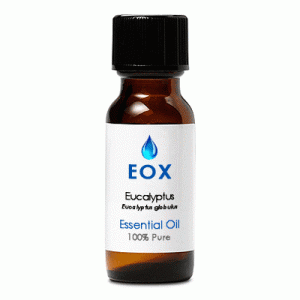|
Characteristics:
A colorless mobile liquid with a somewhat harsh camphoraceous odor and woody-scent undertone.
It blends well with thyme, rosemary, lavender, marjoram, pine, cedarwood and lemon.
Principal Constituents: These are naturally occuring in the essential oil.
- cineol
- pinene
- limonene
- cymene
- phellandrene
- terpinene
- aromadendrene
General Actions:   Open Symbols Key
Open Symbols Key
Analgesic, antineuralgic, antirheumatic, antispasmodic, balsamic,
cicatrizant, decongestive, deodorant, depurative, diuretic, expectorant, febrifuge, hypoglycemic,
parasiticide, prophylactic, rubefacient, stimulant, vermifuge, vulnerary.
Safety:

Externally non-toxic, non-irritant (in dilution), non-sensitizing. When taken internally eucalyptus
oil is toxic and as little as 3.5 ml has been reported as fatal. For external use only.
Primary Therapy Agent:
Cold sores, herpes, wounds, arthritis, aches and pains, poor circulation, low blood pressure,
rheumatism, bronchitis, catarrh, coughs, sinusitis, colds/flu, fever, measles.
Secondary Therapy Agent:
Athlete's foot, boils, abscesses, blisters, burns, dandruff, insect bites, insect repellent, lice,
sprains, strains, asthma, sore throat, throat infections, cystitis, leucorrhea, chickenpox, headache,
nervous exhaustion, fatigue, neuralgia, sciatica.
Important Note: The information on Florapathics.com is
only provided for educational purposes, and further research should be done on each essential oil to be assured
of its proper usage for each individual. Aromatherapy is not meant to be a replacement for care under a qualified
health professional, but should be considered a complimentary modality.
|








